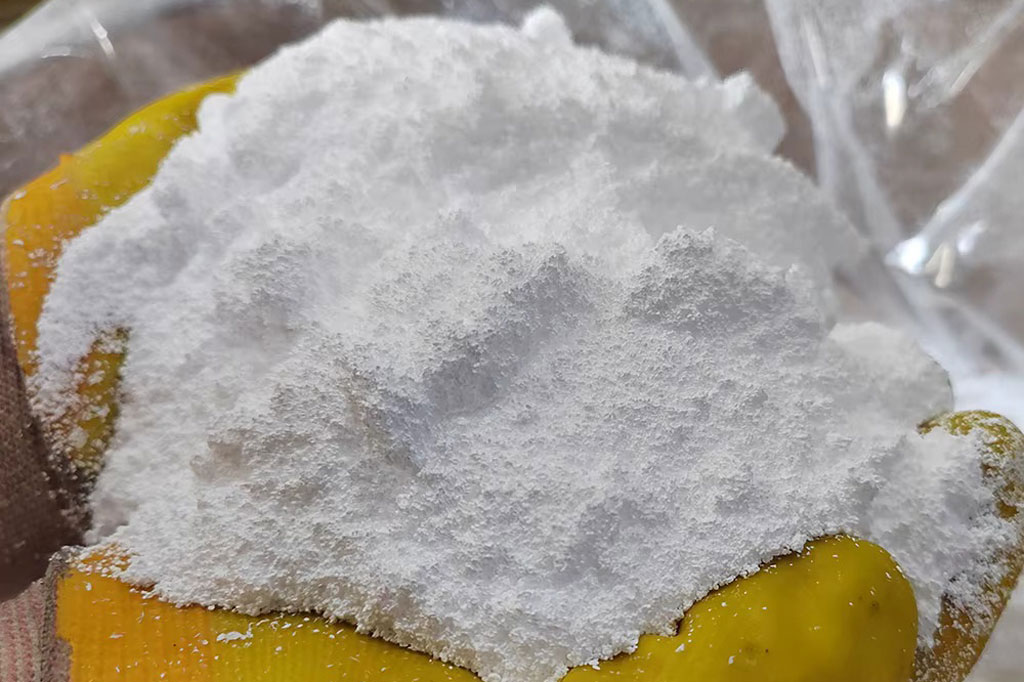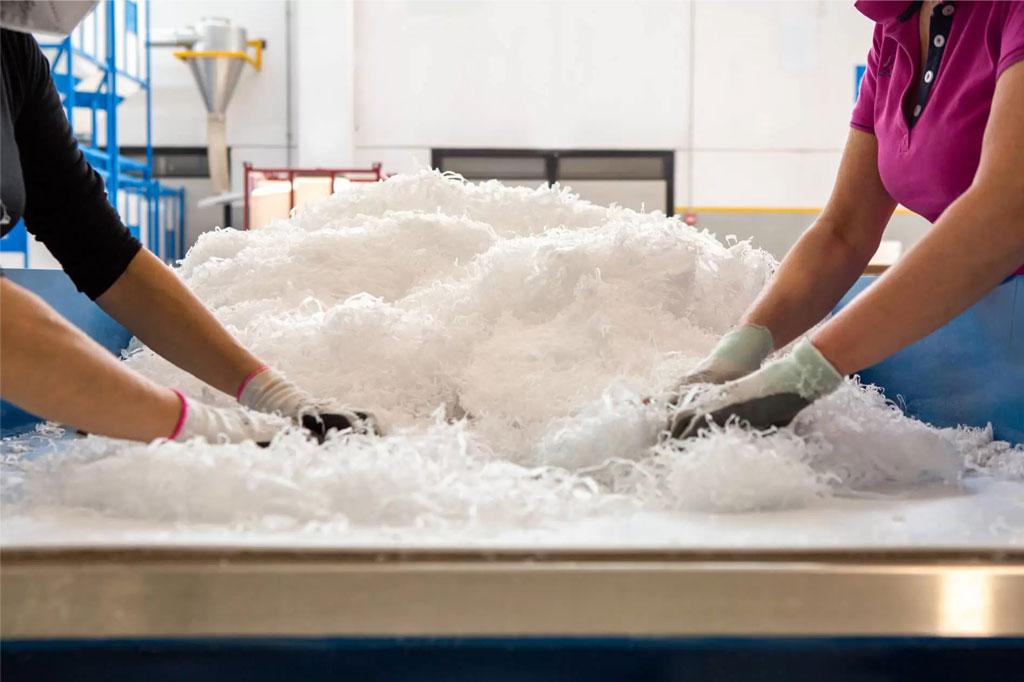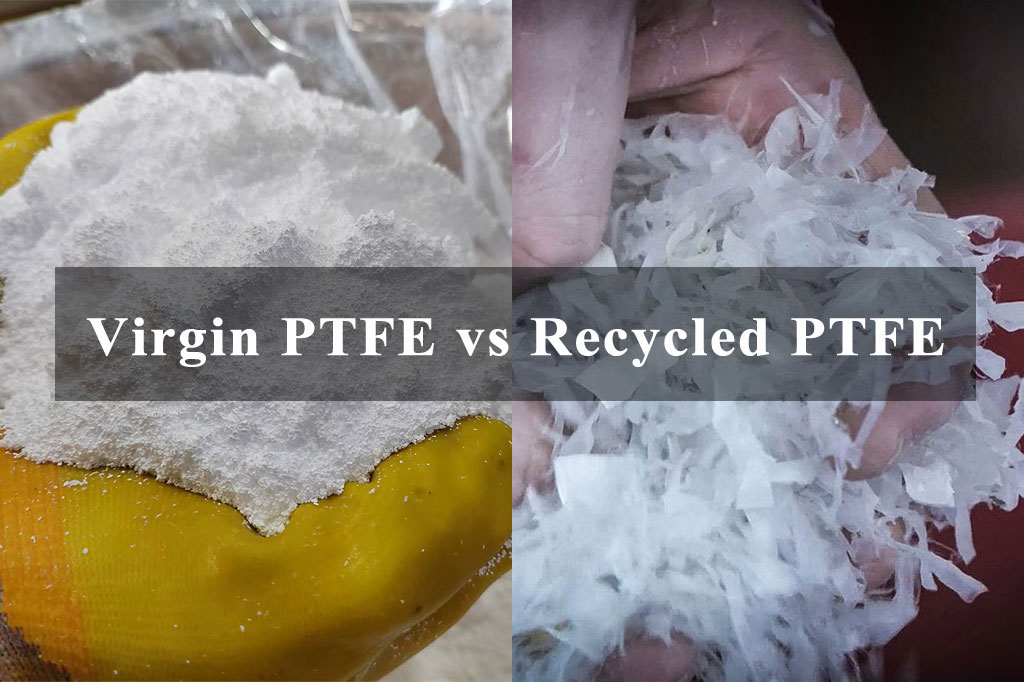Polytetrafluoroethylene (PTFE) is a synthetic fluoropolymer best known for its nonstick, chemical-resistant, and low-friction properties. Commonly recognized under the brand name Teflon, PTFE has found widespread application across industries ranging from chemical processing and electronics to automotive and food production.
While PTFE can be manufactured in both virgin (pure) and recycled forms, the distinction between these two types is critical for engineers, manufacturers, and end-users alike.
This article explores the key differences between virgin and recycled PTFE in terms of their composition, performance characteristics, applications, and regulatory considerations.
What is Virgin PTFE?

Virgin PTFE refers to PTFE that is made from pure, unprocessed, and unmodified polytetrafluoroethylene resin. It has never been used or exposed to industrial processes before molding or machining. As a result, it maintains the optimal physical, chemical, and thermal properties intended by the original resin formulation.
Key Properties of Virgin PTFE:
- High purity: No fillers or contaminants.
- Excellent chemical resistance: Resistant to most corrosive agents, acids, and solvents.
- Wide temperature range: Operates effectively between -200°C and +260°C.
- Low coefficient of friction: One of the lowest among solid materials.
- High dielectric strength: Ideal for electrical insulation.
- Non-stick and non-reactive: Used in pharmaceutical and food-grade applications.
What is Recycled PTFE?

Recycled PTFE, often referred to as reprocessed or reclaimed PTFE, is made by reusing PTFE scrap material that has been reground, melted, and reformed into usable shapes. The recycled material can include leftover trimmings from machining, off-spec materials, or used PTFE components.
Types of Recycled PTFE:
- Mechanical Regrind: Clean scrap is ground and re-melted into new forms.
- Reprocessed with Fillers: Sometimes mixed with fillers such as glass or carbon to enhance or modify specific properties.
- Blended Material: A mix of virgin and recycled PTFE to balance cost and performance.
While recycling helps reduce material waste and manufacturing costs, it also alters the polymer’s properties to some extent.
Key Differences Between Virgin and Recycled PTFE
| Property | Virgin PTFE | Recycled PTFE |
|---|---|---|
| Purity | 100% pure | May contain impurities or fillers |
| Mechanical Strength | High | Typically lower |
| Chemical Resistance | Excellent | Good to moderate |
| Thermal Stability | Superior | May degrade more quickly at high temps |
| Dielectric Strength | Very high | May be lower due to contamination |
| Certifications | Meets FDA, USP Class VI | Usually not certified for food/pharma |
| Cost | Higher | More cost-effective |
| Environmental Impact | Higher (non-renewable) | Lower (sustainable reuse) |
Applications of Virgin PTFE
Virgin PTFE is favored in applications where the highest levels of purity, safety, and performance are required. Common uses include:
- Medical devices: Catheters, surgical instruments, and implants.
- Food processing: Conveyor belts, seals, and gaskets in direct contact with food.
- Pharmaceutical equipment: Tubing, lining, and fittings where contamination must be avoided.
- Electrical insulation: Due to its excellent dielectric strength and thermal resistance.
- Aerospace and defense: High-performance seals and insulators under extreme conditions.
These applications demand compliance with stringent regulatory standards, such as FDA, USP Class VI, or ASTM D4894, which only virgin PTFE can typically meet.
Applications of Recycled PTFE
Recycled PTFE is ideal for non-critical applications where reducing costs is more important than achieving maximum performance.
- Industrial gaskets and seals: Used in non-corrosive environments.
- Mechanical parts: Bushings, washers, and spacers in less demanding applications.
- Construction materials: Liners and insulators where regulatory compliance is not required.
- Automotive components: Low-cost parts with moderate temperature and wear demands.
In many industrial scenarios, recycled PTFE can deliver sufficient performance while providing significant cost and environmental benefits.
Cost Comparison
One of the main drivers for choosing recycled PTFE is cost reduction. Virgin PTFE, due to its high purity and regulatory compliance, commands a premium price ($30–50 per kilogram). On the other hand, recycled PTFE can be 30–60% less expensive ($10–20 per kilogram), depending on the grade and application. For large-volume or low-risk projects, this cost difference can be highly advantageous.
However, using recycled PTFE in critical systems may lead to long-term performance risks, such as increased wear, leakage, or contamination—leading to higher costs in maintenance, recalls, or liabilities.
Regulatory and Certification Considerations
Virgin PTFE is often required to meet the following standards:
- FDA 21 CFR 177.1550: For materials that contact food.
- USP Class VI: Biocompatibility for medical use.
- ASTM D4894 or D1457: For mechanical and physical property benchmarks.
Recycled PTFE typically does not meet these certifications, which makes it unsuitable for regulated industries. If compliance is critical, users must verify resin traceability, lot testing, and third-party certifications.
Environmental Impact

Environmental concerns are prompting industries to seek more sustainable solutions. While virgin PTFE is made using energy-intensive processes and fluorinated gases with potential environmental impacts, recycled PTFE supports:
- Waste reduction: Utilizes scrap that would otherwise go to landfills.
- Lower carbon footprint: Reduces raw material extraction and processing energy.
- Resource efficiency: Maximizes the life cycle of existing materials.
Some manufacturers now offer eco-friendly PTFE blends to balance performance and sustainability—an important step toward circular manufacturing.
Choosing Between Virgin and Recycled PTFE
The choice depends on a variety of factors:
| Criteria | Recommended PTFE Type |
|---|---|
| Food or medical use | Virgin PTFE |
| Extreme temperature or pressure | Virgin PTFE |
| Cost-sensitive applications | Recycled PTFE |
| General industrial use | Either (depending on risk level) |
| Environmental focus | Recycled PTFE |
| Certification required | Virgin PTFE |
Before selecting a material, it’s essential to assess application requirements, regulatory obligations, and long-term performance expectations.
Conclusion
Virgin PTFE remains the gold standard for high-performance and regulated uses due to its unmatched purity, chemical resistance, and certification readiness.
Recycled PTFE, on the other hand, provides a cost-effective and environmentally conscious alternative for less demanding industrial tasks.

